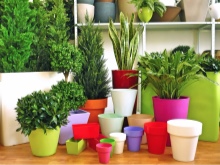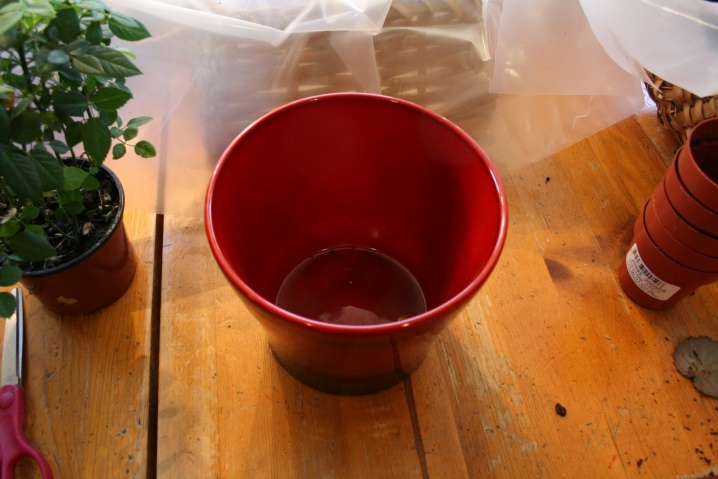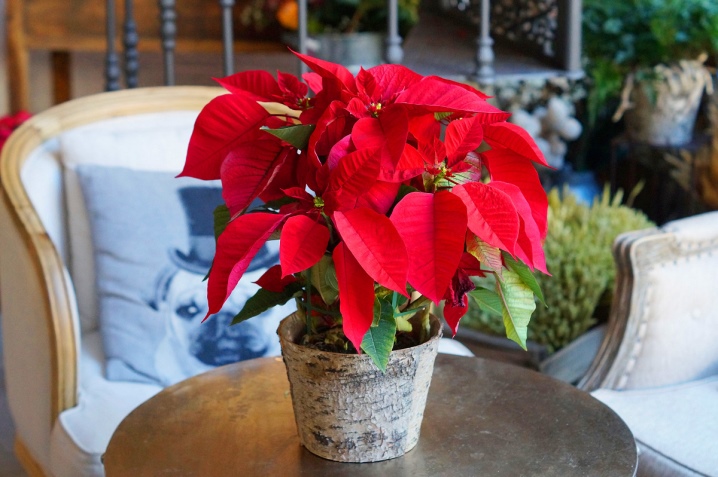When and how best to transplant indoor flowers?

Indoor flowers require attention and care, so most of them need to be transplanted on time. In order not to harm the plant, it is important to know when and how to do it correctly. Only in this case the flower will normally take root in a new pot and bloom.

When is it necessary to transplant the plant?
There are several external signs indicating that it is time to transplant the plant into another pot, which is usually larger in size than the previous one.
As soon as the following changes became visible, it's time to start the procedure:
- foliage turned yellow;
- the flower no longer grows;
- ovaries of buds have ceased to appear;
- the roots became visible;
- the soil dries out faster or a rotten smell appears;
- there is a white coating on the surface of the soil;
- parasites appeared.

The transplant does not always benefit the flower. There are cases when it is contraindicated, and it is worth postponing:
- immediately after buying a plant;
- the flower is sick or attacked by parasites;
- at the time of flowering.
After purchasing a new plant, you can change the pot only after 15 days.
This is exactly how much is needed to adapt a specimen in a new home. During this period, the flower gets used to new climatic conditions.
If the plant is affected by pests or is sick, then the weakened plant may not survive the transplant. The same goes for the flowering period. These days, all forces are spent on maintaining the flower stalks, so unnecessary actions will drain the flower.

Timing
It is best to change the capacity during the dormant period, that is, in autumn and winter, but in each case everything is individual, since there are indoor flowers that just bloom during the specified period. Some can be replanted in August, others in July or May. Often the time of the year plays an important role. Spring is usually the most unfortunate period.
The growing season is good because new growth begins, all processes start, the flower wakes up from hibernation, it is full of strength. It is much easier for such a specimen to endure stress, it easily and quickly adapts and recovers. Fresh soil contains all the necessary trace elements for new growth.

In winter, the sleep phase begins for most indoor flowers. This is why not everything can be transplanted. If you disturb a weakened flower, then almost always this is adversely reflected in the future. A weak plant is more susceptible to pest and disease infestation. In this particular case, an exclusively emergency change of the container is carried out. For example, when a pot burst.

Many novice growers do not know when to resort to the procedure: in the morning or in the evening. The ideal period is from 16-00 to 20-00. This is the time when the sun has not yet set, but not so actively.
It is important to follow this rule for a number of reasons:
- morning is the time when all life processes are just starting, so stress is more difficult to survive;
- during the day, the peak of activity comes, any change in the situation and conditions will negatively affect future growth.
However, if the transplant is urgent and takes place in the winter, then the best time is the day.
Experienced growers advise to pay attention to the phase of the moon, on which the sap flow depends.
During the growing moon, sap flow is active from the root to the ground parts. Energy fills not only the stem, but also the leaves, buds, ovaries of future buds.

On a full moon, the plant is overflowing with energy, this is the best time to transplant, since even a slight damage to the root system will not affect the general condition of the flower in any way.
It is not hard to guess that when the moon is waning, sap flow begins in the opposite direction, so changing the container is contraindicated... If the root system is damaged, then the specimen may not survive the changes and simply get sick or dry out.
The same goes for the new moon phase. All energy is concentrated in the roots, their damage will lead to serious problems in the future. There is a high probability that the flower will die.

Fundamental rules
Often an unsuccessful transplant is a consequence of the fact that the grower simply did not know about the main rules according to which it should be carried out.
The procedure can be either planned or emergency. There are rules according to which it is carried out:
- it is best to transplant during the growing season;
- the time of day sometimes plays an important role;
- transshipment of the plant can be carried out in early autumn;
- winter for many flowers is not the best period, as they are depleted after flowering.
The hardest part is with large single specimens. Removing them from the ground is inconvenient, and sometimes even impossible.

In this case, it is possible not to completely change the soil, but to remove only the first 5 centimeters and fill the container with new soil.
Before proceeding with the first transplant, it is worth making sure that the root system of the plant is sufficiently strong. The next pot should only be slightly larger than the previous one. The difference in diameter cannot be more than a centimeter. If you do not follow this rule, then water will collect in the soil. The plant will not be able to completely absorb it, the roots will rot. In this case, it is easy to notice that growth has slowed down or has stopped altogether.
In the case when a container is used, where there was already a flower before, then it will need to be carefully processed with whiteness, and then washed well. This disinfection helps to avoid rot infestation.


There are other rules that must be followed:
- when using a clay pot, its drainage holes should be covered with shards, and then compost should be poured;
- before carrying out the procedure, you need to thoroughly water it - this will help to saturate the roots with moisture and soften the soil, after which it will become easier to remove them from the container;
- if the roots do not give in, then you can draw a knife along the edge of the pot;
- in the process of transplantation, it will be necessary to process the root system, that is, remove old and damaged processes;
- before placing the flower inside a new container, it is worth pouring a layer of soil on the bottom and add the rest on top of the stem;
- it is important to compact the compost a little with your fingers - this is how air "pockets" are removed;
- after transplanting, the plant is thoroughly watered and try to keep in the shade, after a week you can put the container in its original place on the windowsill.



Choosing a capacity
Do not assume that transplanting into a large pot is the best option for a flower. The choice of capacity must be approached as responsibly as the procedure itself.
The further well-being of the specimen depends on which container will become a new home. Few people know that plants with large leaves do not take root well in a large container.
In this case, all trace elements remain in the soil. When the container is small, due to a lack of space, the root system actively absorbs vitamins and minerals, thereby the leaves receive the necessary nutrition.
It is better to use new pots, and if this is not possible, then thorough disinfection allows you to get rid of pathogens and mold. The wooden container will need not only be processed, but also sterilized with steam, you can scald it with boiling water.
Any design solution can be purchased in a good store. Containers are made of wood, plastic, clay. The sizes and shapes are different.



After purchasing a new container, it must be left in water for half an hour. This prevents soil and dust from clogging the pores in the material. If this is not done, then there will be insufficient oxygen in the soil, and it is extremely important.
For large palms and trees, it is better to choose a wooden container made of solid wood. Perfectly fits:
- Birch;
- beech;
- oak.
It also happens that the manufacturer did not provide drainage holes at the bottom. They will need to be drilled out.

Without holes, moisture will accumulate in the ground. Its excess leads to the formation of putrefactive processes in the root system.
Soil preparation
Before you start replanting the plant, you will need to prepare everything, including the soil. The quality of the soil and its mineral content play an important role in further development. The composition can be light, medium and heavy.
Light soil is obtained as follows:
- 3 parts of peat;
- part of the leafy land;
- 1/2 part sand.
A medium composition soil consists of the following components:
- 2 pieces of leafy land;
- 2 parts of peat;
- 1 serving of humus;
- 1/2 part sand.
It is better not to take river sand. The fact is that it contains many pathogenic microbes that can harm the plant.
Specialty stores have special sand.

Heavy soil consists of:
- from 3 pieces of turf;
- 2 - leafy land;
- 2 - humus;
- 1/2 - sand.
In remote regions, it is not always possible to purchase some components; in this case, peat and deciduous mixture can be replaced with humus.
In the process of creating an ideal soil, it is worth mixing in a small portion of charcoal, which is pre-crushed.
Each plant has its own soil composition. So, plants with fleshy, thick roots take root well in soil with a heavy composition. Sod soil must be rotted.

For flowers with fragile, thin roots, it is worth picking up a soil with a light composition.
Step-by-step instruction
The correct transplantation technology is a guarantee that the flower will be healthy and will quickly grow further.
There are two options for how the transplant is performed:
- complete replacement of the container;
- partial change of soil.
If we talk about sparing intervention, then it is better to use the second one. In this case, the root system suffers minimally. It is worth using this method in several cases:
- the flower is too large and it is not possible to transfer it to a new container;
- the soil in the pot is not yet depleted;
- the plant has room to develop, it looks healthy.


If you follow the step-by-step instructions, then even a novice grower will be able to transplant a flower without serious consequences for him.
- Ready-made soil, which is supplied for sale to specialized stores, does not require additional processing. If the soil mixture is prepared on its own, then the substrate will need to be disinfected. It's easy to do this at home. The soil is placed in a water bath and heated for several hours. So it is possible to destroy pests that can live in the soil.
- After the mixture is placed inside the oven. The temperature inside should be no more than +40 C. The holding time is half an hour.
- After the work done, the earth is allowed to cool, then fertilizers are intervened.
- Even if there are drainage holes at the bottom of the container, it is worth laying pebbles or rubble in the bottom layer.
- The drainage layer is sprinkled with earth, the root system of the plant is placed and the soil is again poured. The level to which the soil reaches should not be higher than the previous one.
- The flower should be carefully removed from the old container. If the soil is slightly wetted, then not only the plant will be saturated with moisture, but also the root system will be easier to remove from the container. If it doesn't respond well, it is worth using a spoon, fork or knife, which they pass along the edges, prying the root ball.
- Before the greens are moved to a new container, it is worthwhile to look closely at the roots for rot, pest-infested areas.Old shoots that have already dried are also removed.
- In conclusion, the soil should be lightly crushed with your fingers and watered.
The best place to acclimatize is a warm, humid room, where there is no bright sun. Watering will need to be halved for several weeks.

Features of transplanting different colors
It is not difficult to transplant an indoor flower at home. Azalea, anthurium, Decembrist are plants with which the procedure is carried out according to the same principle.
For the procedure, you should not choose too large a container, the soil in which they take root is slightly acidic. When buying these plants, it is better to change the container after a week.
A flower like the "Christmas Star" is unpretentious, but requires proper care. It is important for the roots to get enough moisture to keep the greenery juicy. As a new home, it is worth choosing a tight container, then the necessary trace elements will be properly absorbed by the root system.

The plant always lets you know when it's time to change the soil. Usually, the transplant is carried out as planned, if the capacity has not changed for three years. Other signs include:
- the soil in the pot has become too dense;
- there is a distinct smell of hydrogen sulfide from the container, which is the first sign of putrefactive processes in the soil;
- the plant began to lose its visual appeal, dries up, foliage withers, which may be due to a high concentration of pests in the substrate.
Pomegranate, money tree and rose are indoor flowers with thick stems.
Such plants do not like too wide containers, where they do not receive enough nutrients, which are so necessary for growth and flowering.

After purchasing one of these types in the store, you will definitely need to replace the substrate. It is better if the soil has a heavy composition - this is exactly what experienced plant breeders recommend for tree-like indoor flowers.
If the substrate is prepared independently, it must be disinfected without fail. You can use potassium permanganate, with a weak solution of which the prepared soil is watered. Potassium permanganate will get rid of pests that like to live on and feed on roots.
When working with any of these flowers, it is necessary not only to carefully remove the roots, but also to carefully examine them. Visible problems are removed with sharp scissors, but before that, the instruments should be disinfected. Manganese solution can be used as a disinfection solution.
It is important to remember that a rose, pomegranate transplanted into a large pot may not bloom.

When examining the root part, you cannot use water to clear it of soil. It is better to gently free the roots with your hands.
When buying a plant, you need to pay attention to the presence of ovaries. Most likely, such a flower is not young, and the appearance of buds is one of the attempts to survive. Most indoor plants do not like to be disturbed during the flowering period. All vitamins and minerals are absorbed by the buds, so there will be no strength left for recovery.
When carrying out an emergency change of capacity, you can notice negative consequences after a few days. On green leaves, the tips begin to dry, dark spots appear, the lower foliage rolls up. These are the first signs of extreme stress.
It also happens that the plant gets sick during the flowering period, and a transplant is required. In this case, all the peduncles are first removed and only after that they change the capacity and soil.

Follow-up care
Most novice growers believe that no follow-up care is required, but this is their main misconception. The flower does not ask, it demonstrates by its appearance that something is going wrong. There are a number of mistakes housewives make:
- after acquiring a new copy, it is not quarantined, but put on the window to others;
- they leave old soil, which is already depleted, and it is impossible to draw minerals from it;
- the new substrate was chosen illiterately;
- feeding is applied too early, which is also harmful.
It must be remembered that the soil, which the seller is filled with, is not always suitable for home use.

If you do not transplant, then, most likely, the flower will die after a while. You should not use a soil consisting only of peat, since such a substrate has a bad effect on the health of a green household.
It must be remembered that fertilization should be applied no earlier than 30 days after the procedure. "Epin" and "Kornevin" are perfect for this. It is advisable to apply top dressing together with watering.
It is best to change the capacity as planned, focusing on the age of the plant. If it is young, then this is an annual procedure; the older, the less often it is necessary to disturb the roots. Flowers from 3 years old require replacement of containers and soil only once every three years, and some can only change the topsoil a couple of times a year.
For transplanting indoor plants, see below.































The comment was sent successfully.